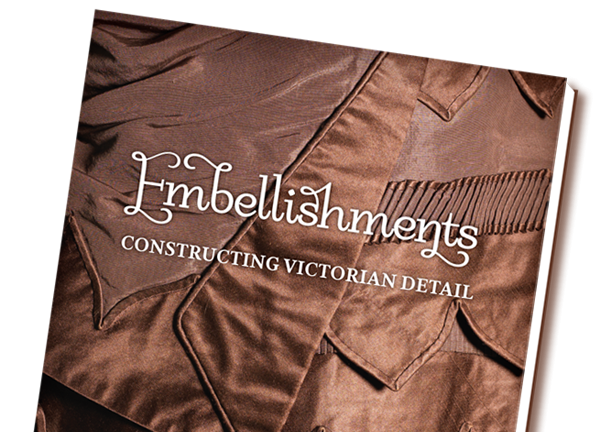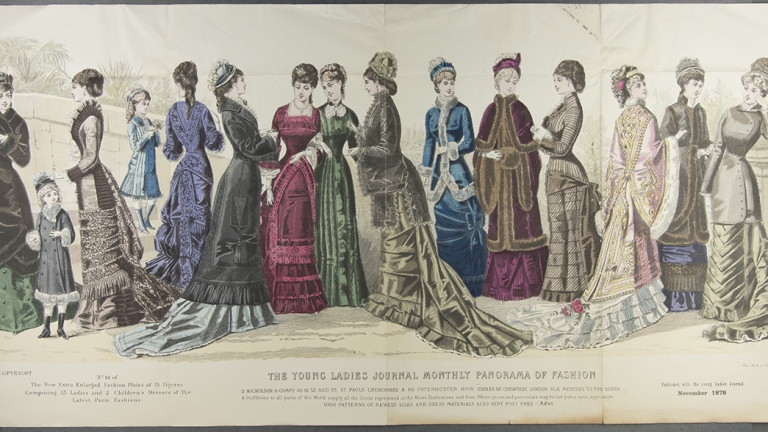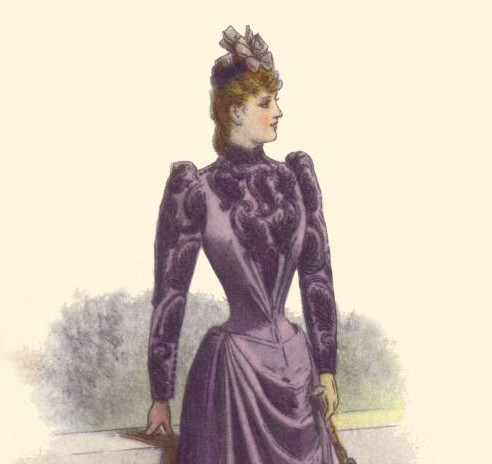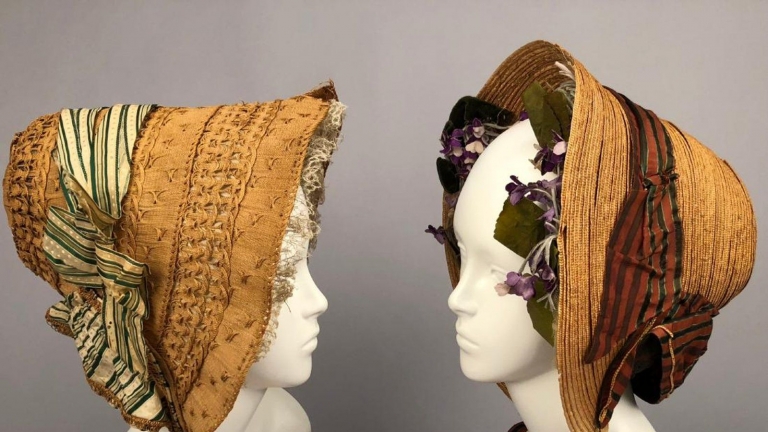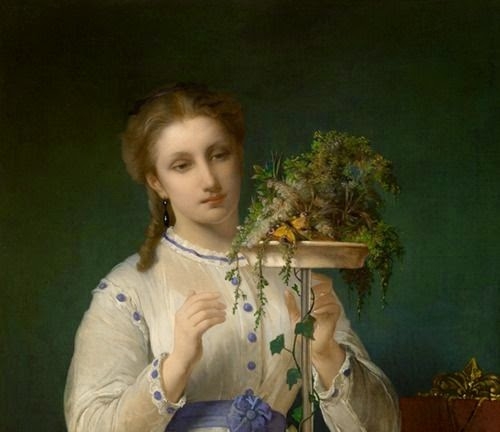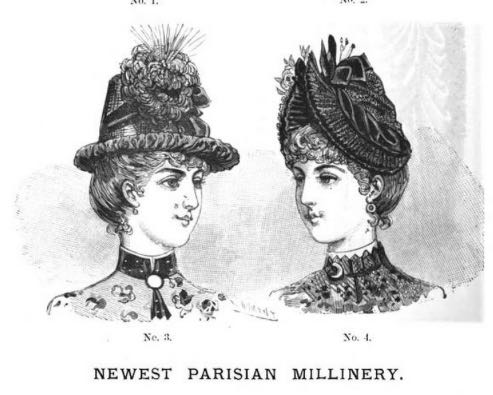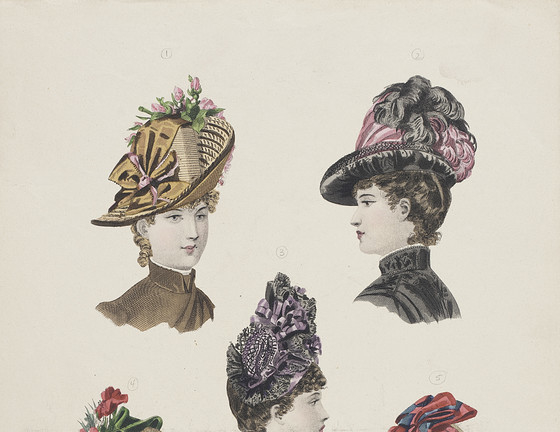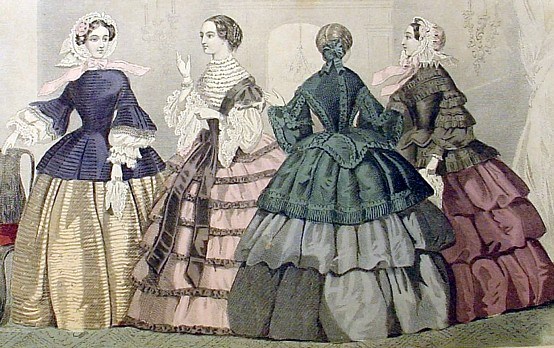Book review of Embellishments by Astrida Schaeffer
by Catherine Scholar, First published for the May/June 2013 issue of Finery Victorian costumers, brace yourselves! There’s a whole new world of inspiration and practical assistance coming your way. I recently had the privilege of previewing the first three chapters of Embellishments by Astrida Schaeffer, an upcoming book that details, well, embellishments. On late Victorian gowns. In here’s-how-you-do-it detail. Interested […]
The 1870s Year by Year
by Judith Hollenberger Dunlap, First published for the January/February 2013 issue of Finery The decade of 1870-1879 included drastic changes of silhouette in women’s clothing. The large elliptical hoop of the late 1860s was pushed back into a bustle, which was quickly dropped for a form fitting ‘natural’ shape. Natural in name only, as it was achieved by lengthening the […]
The Mauve Decade
by Judith Hollenberger Dunlap. Originally published for the November/December 2012 issue of Finery. Mauve was the first color of aniline dye discovered by William Henry Perkins as he searched for an artificial way to make quinine. The aniline dyes he developed in the latter half of the 19th century opened up fashion to an array of new colors, but mauve […]
25 Ways to Trim an Early Victorian Bonnet
by Jennifer Rosbrugh, First published for the September/October 2012 issue of Finery Flipping through a stack of (digital) fashion plates, I was enthralled by so many ideas for how to decorate an Early Victorian Bonnet. I was doing trim research a couple years ago to complete my poke bonnet for Costume College 2010 and fell in love even more with […]
Keeping Your Cool: Mid-Victorian Sheer Dresses
by Elizabeth Urbach, First published for the May/June 2012 issue of Finery Mid-Victorian daytime fashion was not all about heavy, opaque fabrics; warm weather allowed for light dresses of semi-transparent fabric like barege and muslin, trimmed with embroidery, ribbons and lace for a cool, floating visual effect. These gowns, called sheer dresses or “clear muslin dresses” were especially popular at […]
19th Century Children
by Lynn Downward, First published for the November/December 2011 issue of Finery So you want to bring the kids to Dickens Fair this year – in costume! How can you possibly build children’s clothes when you’ve never researched them before and you have no time or money budgeted for it? In preparation for Dickens Fair, here is an overview of […]
The Conquistador Hat for Girls
by Thena MacArthur, First published for the May/June 2011 issue of Finery No, not talking about that metal helmet worn through the jungles of the Yucatan on the way to wiping out entire civilizations, I’m talking about a style of ladies’ hat and bonnet made popular in the 1880s. A useful fact about hats in the Bustle period that will […]
Bee in Your Bonnet?
by Thena MacArthur, First published for the March/April 2011 issue of Finery I am crazy for Victorian hats and bonnets. It should come as no surprise that I am writing about them: those who know me are probably rolling their eyes. For the sake of brevity, I will not comment on what passes these days for a “Victorian Lady’s Hat,” […]
Skirting Issues
by Catherine Scholar, First published for the November/December 2010 issue of Finery The most visibly striking part of mid-19th century women’s dress is the wide, crinoline-supported skirt. Seriously, what little girl hasn’t dreamed of waltzing around a ballroom like Cinderella in a big, poofy dress? Skirts of this period (1830-1865, although the hoop didn’t come in until 1857) aren’t difficult […]
Accessories Make the (Victorian) Man
by Virginia Solomon, First published for the May/June 2010 issue of Finery Modern men have streamlined their attire so extremely that the only accessories ever seen are a handkerchief in the pocket and perhaps cuff links. Nothing else distinguishes one’s class, affluence and style. But in the Victorian/Edwardian Era, the numerous accessories one carried and wore could easily aid the […]
